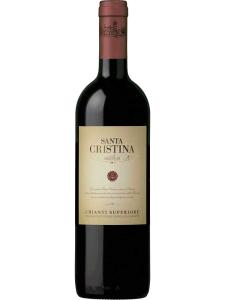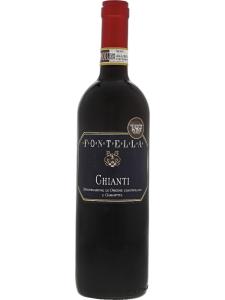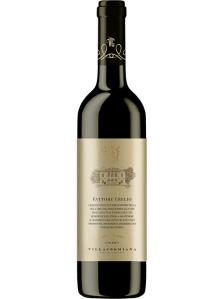Chianti, situated in the region of Tuscany in central Italy, is home to probably the best-known of all Italian wine districts, closely associated with red wines based on the Sangiovese grape. A tasting of Chianti is characterized by red and black cherry characters, along with savory notes, wild herbs and spice, supported by racy acidity and well-structured tannins.
Chianti's winemaking zone is located between the cities of Florence (to the north) and Siena (to the south), and stretches into these provinces plus Prato, Arezzo, Pistoia and Pisa. Its vineyards yield more than any other Italian DOC, producing 75 million litres (20 million gallons) per year.
The first Chianti wine zone was officially demarcated by Grand Duke Cosimo Medici III in 1716, and Barone Ricasoli of Castello di Brolio winery is credited with laying the foundations of the modern Chianti style in the late 19th Century. At that time, Chianti wine was made using a wide range of local varieties, including white grapes. The Chianti DOC title was created in 1967, and in 1984 the region was promoted to the highest level of Italian wine classification: DOCG.
The area's most highly regarded wines come from the Chianti Classico zone, which was awarded a separate DOCG status in 1996. As in other Italian regions, the Classico designation roughly corresponds to the original (and so theoretically the best) area of production in the Chianti hills, first codified in the early 1700s. Classico bottles (when sold in Europe) are adorned with the famous black rooster (gallo nero) seal.
Since 2013, Chianti Classico Gran Selezione has existed as the highest quality level in the region. Grapes must be estate grown and the wine aged for 30 months, three of which must be in bottle. It must also be approved by a special tasting panel of the Consorzio Vino Chianti Classico. The tier sits above Chianti Classico Riserva, where the criteria focus on aging (24 months) over grape quality and supply.
Chianti Rufina is usually described as the next best DOC. This and the other six Chianti sub-zones (Chianti Colli Aretini, Chianti Colli Fiorentini around Florence, Chianti Colli Senesi around Siena, Chianti Colline Pisane, Chianti Montalbano and Chianti Montespertoli) are located within the Chianti DOCG boundary. Any wine made in these zones is permitted to use either the name of the sub-zone or simply be released as Chianti.
Chianti's success as a DOC wine dwindled in the 1970s, as many quality producers reacted against its image of mass production and the classification's broad rules, which perpetuated the use of lesser varieties, including white grapes. Wines were produced under the looser conditions of the lowest Vino da Tavola classification, to enable the winemaker to use pure Sangiovese, or to add a touch of Cabernet Sauvignon.
Unsurprisingly the regulatory bodies were dismayed that many of Chianti's top wines were now being produced as Super Tuscans outside of their system. A new IGT designation was introduced to bring these different blends or varieties closer to the DOC system.
Since 1996, Chianti wines must contain a minimum of 70 percent Sangiovese. This rises to 80 percent for Classico and above. The native varieties Canaiolo and Colorino are also permitted in the blend, as are the international varieties Cabernet Sauvignon, Merlot and Syrah. The 1996 rule changes allowed producers to release pure Sangiovese Chianti wines, focusing on the flagship Tuscan grape variety. The use of white grapes Trebbiano and Malvasia has been prohibited since 2006 (except in Chianti Colli Senesi until the 2015 vintage).
White wines are made from grapes grown within the boundaries of the Chianti zone, but must be labeled as Toscana IGT, Colli della Toscana Centrale IGT – based on the main production areas of Chianti – or, if grown in the Greve Valley, Alta Valle della Greve IGT.
Today, Chianti is a source of world-class wines, and has largely moved away from its long-associated image of fiaschi (the squat, straw-covered bottles). The recent changes in regulations, though not without controversy, have led to an increase in confidence and pride in the Chianti brand on the part of the region's producers. Increasingly, wineries are returning their flagship wine to Chianti Classico or Gran Selezione, rather than Toscana IGT.




